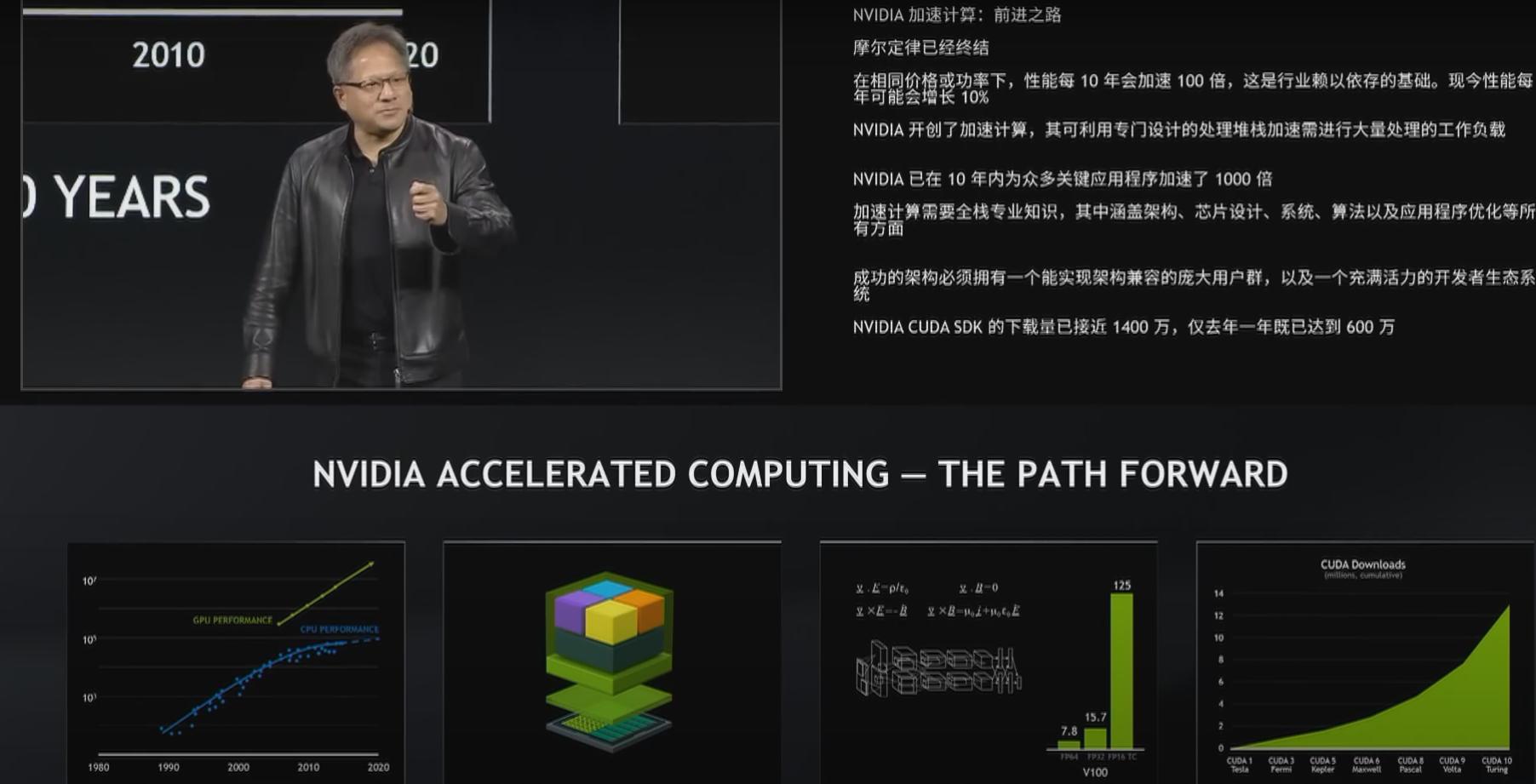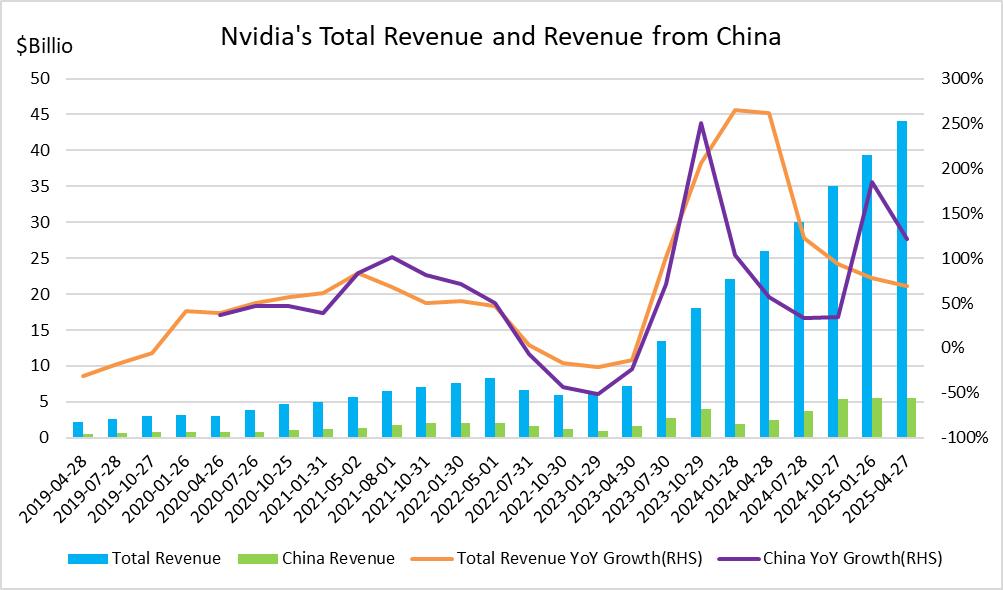Nvidia’s China Bet: How AI’s Biggest Player Got Trapped in a Global Tech Divide
TradingKey - For over twenty years, Jensen Huang, the charismatic and visionary CEO of Nvidia, has been much more than a technology supplier to China. He has played a crucial role in nurturing the growth of China’s technology industry. Born in Taiwan and fluent in the cultural nuances bridging East and West, Huang built a business empire in China that became a benchmark for Silicon Valley’s global influence.
Nvidia’s partnership with China began in the early 2000s by providing powerful GPUs installed in internet cafes—places where many first experienced fast internet and online gaming. Over time, Nvidia’s technology expanded beyond gaming to become essential to China’s rapid AI development. This close relationship wasn’t just business; Nvidia and China grew together, laying the foundation of China’s digital ecosystem.
But by 2025, that golden era may be ending. Huang has shifted from tech icon to cautious diplomat, navigating a complex and tense geopolitical landscape. The recent US approval for Nvidia to export its H20 AI chip to China signals a managed rivalry rather than renewed friendship. Today, every chip sale is a political flashpoint, leaving Nvidia caught between the country it helped build and its own homeland.
From Games to AI: Nvidia in China
Nvidia’s journey in China began with the PC and gaming boom, when Huang saw clearly that China was not merely another market but a world-class hub of manufacturing and talent. The true depth of Nvidia’s relationship began around 2012 with the rise of deep learning. As Chinese tech giants Baidu, Alibaba, and Tencent (collectively known as BAT) raced to develop AI-powered ecosystems, spanning everything from personalized e-commerce recommendations to autonomous vehicles. They found common ground in Nvidia’s GPUs. Huang’s strategy went beyond hardware sales; he built an entire ecosystem. Nvidia’s GPU Technology Conferences (GTC) in Chinese cities became marquee AI events where Huang, often addressing audiences in Mandarin, would unveil new technologies that would define the local AI landscape. 
Source: Nvidia 2018 GTC in China
This helped cement Nvidia’s CUDA platform as the de facto programming language for AI development, erecting a competitive moat that few rivals could breach. By the early 2020s, this partnership had matured into a cornerstone of Nvidia’s global revenue and influence.
The Geopolitical Turning Point: The H20 Deal
However, escalating US sanctions starting in late 2022 dramatically threatened this lucrative arrangement. As Washington’s restrictions tightened through 2023 and beyond, Nvidia’s access to the Chinese market was jeopardized.
In April 2025, the Trump administration abruptly halted exports of Nvidia’s H20 chip to China due to heightened national security concerns. This ban sent shockwaves through Nvidia and its Chinese partners, jeopardizing the company’s foothold in the world’s fastest-growing AI market. The decision highlighted the growing conflict between US national security priorities and commercial interests.
Despite this, China’s AI accelerator market continued to grow rapidly and is now estimated to be worth around $50 billion annually. However, Nvidia’s market share is expected to drop to about 54% in 2025, down from 66% the previous year, due to intensifying domestic competition and the ongoing impact of export restrictions.

Source: Stone Fox Capital
Nvidia’s data center revenue hit $132 billion ($total revenue of 150 billion) TTM as of Q1 FY2026, and most of China market’s $20 billion revenue was suddenly at risk. Chinese AI firms found themselves cut off from critical tools just as the competition to lead global AI intensified.

Source: Nvidia, TradingKey
The concession came in August 2025, when the Trump administration approved the export of Nvidia’s H20 chip to China. The H20 is a deliberately downgraded variant of Nvidia’s flagship H100: it retains impressive compute capabilities but severely limits interconnect speeds between chips, restricting its use for large-scale training of foundational AI models, a primary US security concern. Yet, this approval came with a steep price: a 15% revenue tax on all sales of H20 chips to Chinese customers. This novel geoeconomic tool aims simultaneously to slow China’s advance in cutting-edge AI, maintain Chinese dependence on Nvidia’s CUDA software ecosystem, and redirect profits from US competitors back into American coffers.
This means Nvidia’s $20 billion revenue generated from H20 sales in China, $3 billion would go directly to the US Treasury. Assuming a typical 75% gross margin on its data center products, 15% of Nvidia’s revenue from China taken by US government translates to approximately 2% of Nvidia’s total revenue and about 2.2% of its gross profit lost.
Beijing’s Response and the Production Halt
China’s response, far from welcoming, has been deliberate and guarded. Rather than embracing the return of Nvidia, Beijing has doubled down on its dual circulation strategy, promoting technological self-reliance. Drawing lessons from the past Cisco controversy, where suspicions of backdoors led to broad abandonment of US networking gear, Chinese regulators have called on tech giants including Alibaba, Tencent, and ByteDance to halt or significantly slow Nvidia chip acquisitions. This cautious reception reflects a long-standing concern that Nvidia, under pressure from US regulators, could be compelled to share sensitive information about Chinese users or applications, effectively creating a detailed map of China’s AI development for American authorities. Following this, Nvidia announced a halt to H20 chip production destined for China.
In contrast, domestic champions like Huawei have accelerated the development of indigenous AI chips—the Ascend 920 processor is now a tangible alternative. Although it lags behind the H100 in large-scale model training and its software ecosystem (CANN) is not yet on par with CUDA, Ascend 920 achieves near parity for many inference workloads and is deemed good enough and secure by state directive. Below is a detailed comparison of Huawei’s Ascend and Nvidia’s chips based on an unconfirmed source leaked data circulating online: If the data is true, Huawei's Ascend 920 can potential achieve approximately 60-80% of the performance of Nvidia's H100 in key AI workloads, with potential to scale competitively against Nvidia's Blackwell (B200) in full-system clusters, though it requires higher power consumption and more chips to match Nvidia's efficiency. This practical shift has buoyed Chinese semiconductor firms like SMIC in the market and signals a turning point in technological decoupling.
Specification | Ascend 920 | H100 SXM | B200 |
Efficiency (INT8) | 5.714 TOPS/W | 2.872 TOPS/W | 4.5 TOPS/W |
Manufacturer | HUAWEI N+2 | TSMC N4 | TSMC N4P |
Transistor Count | <100 billion | 80 billion | 208 billion |
Die Size | >1500mm² | 814mm² | 1650mm² |
Performance - INT8 | 2000 TOPS | 1979 TOPS | 4500 TOPS |
Performance - FP8 | 2000 FLOPS | 1979 FLOPS | 4500 FLOPS |
Performance - FP16 | 1000 TFLOPS | 989.5 TFLOPS | 2250 TFLOPS |
Performance - TF32 | 500 FLOPS | 495 TFLOPS | 1250 FLOPS |
Performance - FP32 | 134 TFLOPS | 67 TFLOPS | Unknown |
Performance - FP64 | 67 FLOPS | 33 FLOPS | 67 FLOPS |
Power | 350W | 700W | 1000W |
Architecture | DaVinci v200 | Hopper | Blackwell |
Memory Size | 192GB HBM3 (or 96GB HBM3) | 96GB HBM3 | 192GB |
Tech | Chiplet 2.5D | Chiplet | Chiplet |
Interface | PCIe Gen5 | PCIe Gen5 | PCIe Gen5 |
Interconnect | HCCS 2.0 100000GB/s RoCE 3200Gb/s | NVLink 900GB/s InfiniBand 800Gb/s & 1400Gb/s | NVLink 1800GB/s InfiniBand 800Gb/s & 1600Gb/s |
Source: tphuang on X
Nvidia at a Crossroads: Navigating a Divided Tech World
The deeper reality is that this contest transcends commerce and technology. It represents a fundamental reshaping of the global technology landscape, where data sovereignty, national security, and geopolitical rivalry trump market dynamics. China’s efforts to build robust indigenous AI hardware ecosystems reflect an urgent need to buffer against future US sanctions or export controls.
For Nvidia, this means navigating an increasingly complex terrain. Jensen Huang’s decades of cultural diplomacy and technical leadership have kept Nvidia deeply embedded within China’s AI ecosystem longer than most Western peers, but he can’t stop China’s gradual decoupling. By offering a deliberately downgraded H20 to China, Nvidia attempts to keep the door ajar, preserving dependence on its CUDA software and hardware ecosystem, which is still the most mature AI development environment in the world. The company’s continued success depends increasingly on Huang’s personal ability to broker trust and navigate the rapidly shifting policies of two competing superpowers.
Looking ahead, with the recent production halt and regulatory pressure intensifying, Nvidia’s base in China faces long-term erosion, especially in sensitive sectors such as government, security, and finance, as domestic chips gain ground and Beijing pushes harder for self-sufficiency. The US government’s revenue-sharing tax could evolve into a standard mechanism for controlling tech exports in strategic areas, tightening state control over innovation flows worldwide, and China’s ongoing scrutiny and security reviews might culminate in outright bans.
Worst-case scenario, Nvidia could lose all revenue from China, a market that accounts for approximately 10-15% of its total revenue. Preparing for this possibility is critical, as such a loss would impact the company’s financial outlook and growth trajectory. Most significantly, the global AI industry may bifurcate into two competing hardware ecosystems: American and Chinese, with limited interoperability or cooperation.
In conclusion, Jensen Huang’s journey is both a deeply personal story and a reflection of complex geopolitical realities. His immigrant background and cultural insight enabled him to build bridges between Silicon Valley and Beijing, creating a multi-trillion-dollar corridor of innovation and economic exchange. Today, he witnesses that bridge being dismantled piece by piece. Nvidia’s GPUs, once a symbol of rapid technological integration and limitless opportunity, has become a tightly controlled commodity, moving cautiously through the shadows of geopolitical tensions and heavy taxation. Nvidia now faces not just the challenge of winning markets but of navigating the gradual collapse of an era when permissionless innovation was taken for granted. The future calls for a new kind of leadership, one that understands the delicate, volatile intersections of technology, power, and national sovereignty.

立刻體驗



